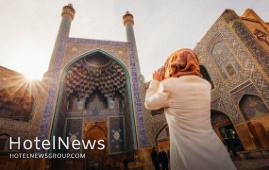
The Iranian tourism industry has suffered $233m losses due to COVID restrictions over the past two years. “Iranian tourism facilities have incurred a loss of 69 trillion rials ($233 million) due to the outbreak of the coronavirus over the past two years,” an official with the tourism ministry has said. It has been a major shock to the tourism industry when the coronavirus emerged in 2019, Rokna quoted Mohammad-Kazem Kholdi-Nasab as saying on Monday. Citing an example, the official said, nearly all pre-scheduled trips were canceled during the new Iranian year holidays in March 2020 except for those that were necessary. “Travel is not believed to be the cause of the outbreak, rather it is a lack of adherence to health protocols that have caused the outbreak, but people canceled their trips anyway, causing major damage to the tourist facilities across the country,” he explained. With only two months until the upcoming new Iranian year holidays, the tourism ministry is preparing safe and smart travel packages for Iranian holidaymakers and travelers, he noted. Nearly 70 percent of the population has been vaccinated, so these trips may be able to partially compensate for the damage done to tourism facilities over the past two years, he mentioned. Last year the tourism ministry announced that the tourism of the country was growing before the corona outbreak, its revenues reached $11.7 billion in 2019, which accounted for 2.8% of GDP, nearing the average share of tourism in the world GDP, which was 3.2 percent. Iran was ranked as the second fastest-growing country in tourism based on data compiled by the World Tourism Organization. Experts expect Iran to achieve a tourism boom after coronavirus contained, believing its impact would be temporary and short-lived for a country that ranked the third fastest-growing tourism destination in 2019. The Islamic Republic expects to reap a bonanza from its numerous tourist spots such as bazaars, museums, mosques, bridges, bathhouses, madrasas, mausoleums, churches, towers, and mansions, of which 26 are inscribed on the UNESCO World Heritage list. Under the 2025 Tourism Vision Plan, Iran aims to increase the number of tourist arrivals from 4.8 million in 2014 to 20 million in 2025.
Create: Jan 8, 2022 Edit: Jan 8, 2022 Regional News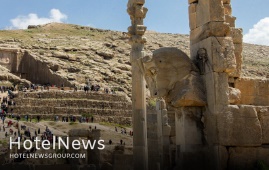
Authorities of Persepolis have launched an unmanned aerial vehicle (UAV) documentation project to help study and analyze the neighboring lands and properties, which encircle the UNESCO World Heritage site in southern Iran. “A documentation project has been commenced on the closest boundaries of Persepolis to gather needed information to monitor possible changes and interventions in this area,” said Hamid Fadaei, the director of the World Heritage site. The first purpose of this documentary is to prepare a cadastral map of agricultural lands in the first-grade boundaries of Persepolis, and the second purpose is to record the current status of historical monuments, including historical sites and hills that are dotted in that area, Fadaei explained. “In that regard, we operate close-range photogrammetry and UAV in the documentation of architecture monuments…..And the project is expected to become to an end by the yearend (March 20, 2022),” the official noted. Persepolis, also known as Takht-e Jamshid, whose magnificent ruins rest at the foot of Kuh-e Rahmat (Mountain of Mercy) is situated 60 kilometers northeast of the city of Shiraz in Fars province. It was the seat of the government of the Achaemenid Empire, though it was designed primarily to be a showplace and spectacular center for the receptions and festivals of the kings and their empire. Persepolis ranks among the archaeological sites which have no equivalent, considering its unique architecture, urban planning, construction technology, and art. This 13-ha ensemble of majestic approaches, monumental stairways, throne rooms (Apadana), reception rooms, and dependencies is classified among the world’s greatest archaeological sites. The city’s immense terrace was begun about 518 BC by Darius the Great, the Achaemenid Empire’s king. On this terrace, successive kings erected a series of architecturally stunning palatial buildings, among them the massive Apadana palace and the Throne Hall (“Hundred-Column Hall”). According to Britannica, the stone was cut with the utmost precision into blocks of great size, which were laid without mortar; many of them are still in place. Especially striking are the huge columns, 13 of which still stand in the audience hall of Darius I (the Great; reigned 522–486 BC), known as the Apadana, the name given to a similar hall built by Darius at Susa. There are two more columns still standing in the entrance hall of the Gate of Xerxes, and a third has been assembled there from its broken pieces. Narratives say that Persepolis was burnt by Alexander the Great in 330 BC apparently as revenge to the Persians because it seems the Persian King Xerxes had burnt the Greek City of Athens around 150 years earlier.
Create: Dec 29, 2021 Edit: Dec 29, 2021 Regional News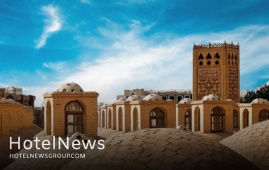
New legal boundaries have been defined for five historical properties, which are scattered across Yazd province. The Ministry of Cultural Heritage, Tourism, and Handicrafts has announced the exact legal boundaries of the properties in separate letters to the governor-general of the central province, IRIB reported on Tuesday. In addition to protecting historical sites, the demarcation projects are aimed to prevent further destruction and damage. Esfahanian Garden House, Eqbal Factory, Vazir Castle, Ezzatabad Castle, and Ezzatabad Kushk (small garden pavilion) are those demarcated recently. In July 2017, the historical structure of the city of Yazd was named a UNESCO World Heritage. Wedged between the northern Dasht-e Kavir and the southern Dasht-e Lut on a flat plain, the oasis city enjoys a very harmonious public-religious architecture that dates from different eras. Yazd is usually referred to as a delightful place to stay, or a “don't miss” destination by almost all of its visitors. The city is full of mudbrick houses that are equipped with innovative badgirs (wind catchers), atmospheric alleyways, and many Islamic and Iranian monuments that shape its eye-catching city landscape. It is a living testimony to the intelligent use of limited available resources in the desert for survival. Water is brought to the city by the qanat system. Each district of the city is built on a qanat and has a communal center. The use of earth in buildings includes walls and roofs by the construction of vaults and domes. Houses are built with courtyards below ground level, serving underground areas. Wind-catchers, courtyards, and thick earthen walls create a pleasant microclimate. Partially covered alleyways together with streets, public squares and courtyards contribute to a pleasant urban quality. The city escaped the modernization trends that destroyed many traditional earthen cities.
Create: Dec 29, 2021 Edit: Dec 29, 2021 Regional News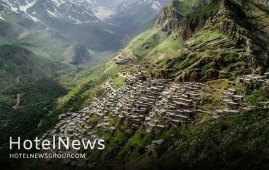
A team of archaeologists from Iran and Germany has carried out a field survey in Uramanat, an ancient rural region in western Iran, which earlier this year was named a UNESCO World Heritage. The survey was intended to shed new light on the history of Uramanat by unearthing remnants of historical monuments and relics, ISNA quoted the director of the World Heritage site as saying on Tuesday. It yielded the discovery of “several” archaeological sites and objects yet it resulted in a change in the chronological sequence of several previously-found ancient sites, Pouya Talebnia added. Moreover, several historical fortresses and their legal properties were demarcated during the survey, which was co-directed by Talebnia and Shelir Amelirad from Heidelberg University, the report said. Carried out during December and November, the survey also contributed to the enrichment of the “pottery bank” of Uramanat, Talebnia said. Stretched on the slopes of Sarvabad county, and shared between the provinces of Kordestan and Kermanshah, the rural area embraces dense and step-like rows of houses in a way that the roof of each house forms the yard of the upper one, a feature that adds to its charm and attractiveness. Last September, Hessam Mahdi, the representative of the International Council on Monuments and Sites (ICOMOS) said that he was “impressed” by the status of the rural landscape during his visit. He made the remarks on the sidelines of a visit to the western province of Kermanshah. “I am proud of being chosen to assess the case and traveling to Iran as I could visit the local people in the region.” Local officials and travel insiders believe that inscription of the property on the prestigious list of the UN body could jumpstart tourism in the region and also look at it as a tool for better conservation of its natural landscapes and unique cultural scenes for the next generations, saying its unique rural texture, architecture, lifestyle, and agriculture is a prominent example of the integration of man into nature. The Islamic Republic expects to reap a bonanza from its numerous tourist spots such as bazaars, museums, mosques, bridges, bathhouses, madrasas, mausoleums, churches, towers, and mansions, of which 26 are inscribed on the UNESCO World Heritage list. Under the 2025 Tourism Vision Plan, Iran aims to increase the number of tourist arrivals from 4.8 million in 2014 to 20 million in 2025. The latest available data show eight million tourists visited the Islamic Republic during the first ten months of the past Iranian calendar year (ended March 20).
Create: Dec 22, 2021 Edit: Dec 22, 2021 Regional News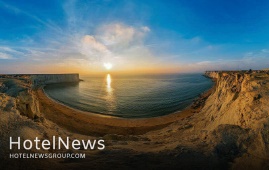
he development of Sistan-Baluchestan through tourism can help the region address its challenges, the deputy tourism chief of the southeastern province has announced. Through the development of tourism, a peace project can be pursued with the neighboring countries in the region, CHTN quoted Mojtaba Mirhosseini as saying on Tuesday. To date, tourism activists in the province have focused on activities for the sustainable development of tourism, which is highly commendable, the official added. The port of Chabahar has the potential to become the maritime tourism capital of Iran, and also the northern region of the province has the potential to become the historical tourism capital of the country, which with the right planning and building of necessary infrastructure, can be achieved, he noted. In order to increase the demand for visiting the province, its attractions and beauty need to be presented as much as possible, he explained. SEO and web marketing are among the most effective digital marketing tools in tourism and can help introduce more people to the province and local businesses, he mentioned. He also noted that organizing fam tours for Iranian tourism activists and media people significantly changed people’s perceptions of the region. Last year, former Cultural Heritage, Tourism, and Handicrafts Minister Ali-Asghar Mounesan said that the development of the travel industry across Sistan-Baluchestan province is among the top priorities for the ministry. “I am interested in Sistan-Baluchestan, and the development of this province is a priority for this ministry and the government,” the former minister stated. “The majority of my travels during my tenure has been to Sistan-Baluchestan, which I consider as a safe province with significant values in terms of culture, history, handicrafts, and tourism.” The collective province -- Sistan in the north and Baluchestan in the south -- accounts for one of the driest regions of Iran with a slight increase in rainfall from east to west, and an obvious rise in humidity in the coastal regions. In ancient times, the region was a crossword of the Indus Valley and the Babylonian civilizations. The province possesses special significance because of being located in a strategic and transit location, especially Chabahar which is the only ocean port in Iran and the best and easiest access route of the middle Asian countries to free waters. The vast province is home to several distinctive archaeological sites and natural attractions, including two UNESCO World Heritage sites, namely Shahr-e-Soukhteh (Burnt City) and Lut desert.
Create: Dec 22, 2021 Edit: Dec 22, 2021 Regional News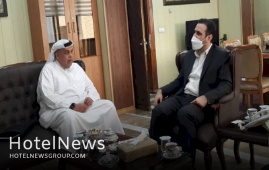
The exchange of tourists between Iran and its neighbors is expected to increase in the months to come, Iran’s deputy tourism minister Ali-Asghar Shalbafian has announced. The official made the remarks during a meeting with Hamad Obaidalla the Chief Commercial Officer of Fly Dubai Airlines on Monday. Increasing tourist exchanges with neighboring countries is on the agenda for Iran following the expansion of the flight network between Iran and the United Arab Emirates, he said. To achieve this goal, the private and public sectors will consolidate their capacities, the official added. For his part, Obaidalla said that currently, Fly Dubai Airlines operates 30 flights a week to Iran, and this capacity will grow to nearly 50 flights in the future. By relying on this capability, tourists can be directed to Iranian tourist destinations effectively, he added. Communication between the private sector of the two countries plays a crucial role in achieving executive strategies, he noted. Back in September, Cultural Heritage, Tourism, and Handicrafts Minister Ezzatollah Zarghami announced the issuance of tourist visas and the flow of foreign tourists to Iran would resume as per President Ebrahim Raisi’s order following 19 months of suspension. Currently, tourist visas are once again being issued to cultivate good grounds of hope for travel insiders. However, months of steep recession have taken its toll. Many travel insiders, hoteliers, and tour operators have faced big dilemmas such as bankruptcy, unemployment, debts, and the prospects of not being competitive on the international level. Only months into the outbreak, Zarghami’s predecessor, Ali-Asghar Mounesan, lamented that the number of foreign travelers to Iran was drastically plunged due to the pandemic. “Tourism of the country was growing before the corona [outbreak], its revenues reached $11.7 billion in 2019, which accounted for 2.8% of GDP, nearing the average share of tourism in the world GDP, which was 3.2 percent,” Mounesan said. He added 8.7 million foreign nationals visited Iran during the [Iranian] year (1398), adding that Iran was ranked as the second fastest-growing country in tourism based on data compiled by the World Tourism Organization. The average of international travels to and from Iran fell by 80 percent during the past Iranian calendar year 1399 (ended on March 20, 2021) from a year earlier caused by various coronavirus restrictions. Optimistic forecasts, expect the country would achieve a tourism boom after coronavirus is contained, believing its impact would be temporary and short-lived for a country that ranked the third fastest-growing tourism destination in 2019. UNWTO’s Panel of Experts foresees a rebound in international tourism in the current year, mostly in the third quarter. However, some experts suggest the rebound could occur only in 2022. The Islamic Republic expects to reap a bonanza from its numerous tourist spots such as bazaars, museums, mosques, bridges, bathhouses, madrasas, mausoleums, churches, towers, and mansions, of which 26 are inscribed on the UNESCO World Heritage list. Under the 2025 Tourism Vision Plan, Iran aims to increase the number of tourist arrivals from 4.8 million in 2014 to 20 million in 2025.
Create: Dec 20, 2021 Edit: Dec 22, 2021 Regional News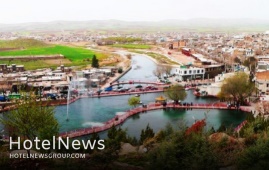
Nine tourism-related projects, which are planned to be carried out across the western province of Kermanshah are estimated to generate 135 jobs upon their completion, the provincial tourism chief has announced. The projects will be implemented in the cities of Kermanshah, Javanrud, Harsin, and Islamabad-e-Gharb, Jabbar Gohari said on Tuesday. A budget of 2.4 trillion rials ($58.4 million at the official exchange rate of 42,000 rials per dollar) will be channeled into the projects, which include accommodation centers, tourist complexes, traditional restaurants, and hotel hospitals, the official explained. Kermanshah embraces a variety of awe-inspiring historical sites, of which Bisotun and Taq-e Bostan are both on the UNESCO World Heritage list. Inscribed into the base of a towering cliff, Taq-e Bostan comprises extraordinary Sassanian bas-reliefs of ancient victorious kings divide opinions. Late afternoon is the best time to visit, as the cliff turns a brilliant orange in the setting sun, which then dies poetically on the far side of the duck pond. Bisotun is a patchwork of immense yet impressive life-size carvings depicting King Darius I and several other figures. UNESCO has it that Bisotun bears outstanding testimony to the important interchange of human values on the development of monumental art and writing, reflecting ancient traditions in monumental bas-reliefs.
Create: Nov 20, 2021 Edit: Nov 20, 2021 Regional News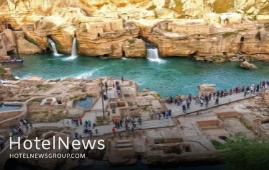
The UNESCO-registered Shushtar Historical Hydraulic System has been closed to visitors amid safety concerns after its western side was announced to be “unstable”. “Shushtar Historical Hydraulic System was closed to the public until further notice due to the unstable conditions of the western wall,” Mehr reported on Sunday. “Cultural heritage experts have warned for years about the instability of this part of the World Heritage,” the report said. Earlier in October, a local official announced that leakage of the site, which is known globally as a masterpiece of creative genius, is an immediate concern and needs to be restored. “To prevent water leakage in the historical structure, which could result in its destruction, short-term measures are taken,” the official said, Mehr reported. Studies and research are being conducted and meetings with consulting engineers are underway to find a way to cause the least damage to this ensemble, the official added. The ancient hydraulic system comprises bridges, weirs, tunnels, canals, and a series of ancient watermills powered by human-made waterfalls. It is named after an ancient city of the same name with its history dating back to the time of Darius the Great, the Achaemenid king. Inscribed on the UNESCO World Heritage list in 2009, the Shushtar Historical Hydraulic System may testify to the heritage and the synthesis of earlier Elamite and Mesopotamian knowhow. According to UNESCO, the ensemble was probably influenced by the Petra dam and tunnel and by Roman civil engineering. The property is as rich in its diversity of civil engineering structures and its constructions as in the diversity of its uses (urban water supply, mills, irrigation, river transport, and defensive system). The Shushtar Historical Hydraulic System testifies to the heritage and the synthesis of earlier Elamite and Mesopotamian knowhow; it was probably influenced by the Petra dam and tunnel and by Roman civil engineering. “The hydraulic system has been considered a Wonder of the World not only by the Persians but also by the Arab-Muslims at the peak of their civilization,” according to the UN cultural body. Furthermore, one of its main canals is a veritable artificial watercourse that made possible the construction of a new town and the irrigation of a vast plain, at the time semi-desert. UNESCO says that the Shushtar Historical Hydraulic System demonstrates outstanding universal value as in its present form, it dates from the 3rd century CE, probably on older bases from the 5th century BC. It is complete, with numerous functions, and large-scale, making it exceptional.
Create: Nov 15, 2021 Edit: Nov 15, 2021 Regional News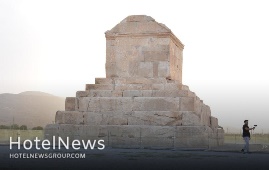
Iranian government has allocated a sum of 200 billion rials (about $4.7 million at the official exchange rate of 42,000 rials per dollar) to develop tourism infrastructure at the UNESCO-designated Pasargadae. A budget of 200 billion rials has been allocated to Pasargadae after President Ebrahim Raisi visited the Achaemenid site earlier in October, a senior tourism official, Javad Vahedi, said on Friday. The Pasargadae complex, as a magnificent World Heritage site, has a high tourism potential in the field of cultural and historical tourism, and we must plan to attract more tourists,” the official explained. Situated about 50 km north of Persepolis, Pasargadae was the first dynastic capital of the Achaemenid Empire, founded by Cyrus II the Great, in Pars, the homeland of the Persians, in the 6th century BC. Its palaces, gardens, and the mausoleum of Cyrus are outstanding examples of the first phase of royal Achaemenid art and architecture and exceptional testimonies of Persian civilization. The UNESCO World Heritage site is also home to a complex water supply system for the time that comprises cisterns, tunnels, underground canals, and ducts, which are locally known as qanats. It is believed that the development of qanats began about 2,500 or 3,000 years ago in Persia (Iran), and the technology spread eastward to Afghanistan and westward to Egypt. Although new qanats are seldom built today, many old qanats are still used in Iran and Afghanistan, chiefly for irrigation. The 160-ha archaeological site of Pasargadae presents some of the earliest manifestations of Persian art and architecture. It includes, among other monuments, the compact limestone tomb on the Morgab plain that once held Cyrus the Great’s gilded sarcophagus; Tall-e Takht (“Solomon’s Throne”), a great fortified platform built on a hill and later incorporated into a sprawling citadel with substantial mud-brick defenses; and the royal ensemble, which consists of several palaces originally located within a garden layout (the so-called “Four Gardens”). Pasargadae became a prototype for the Persian Garden concept of four quadrants formally divided by waterways or pathways, its architecture characterized by refined details and slender verticality. Pasargadae stands as an exceptional witness to the Achaemenid civilization. The vast Achaemenid Empire, which extended from the eastern Mediterranean and Egypt to the Hindus River in India, is considered the first empire to be characterized by a respect for the cultural diversity of its peoples. This respect was reflected in the royal Achaemenid architecture, which became a synthesized representation of the empire’s different cultures. Pasargadae represents the first phase of this development into a specifically Persian architecture which later found its full expression in the city of Persepolis.
Create: Oct 31, 2021 Edit: Oct 31, 2021 Regional News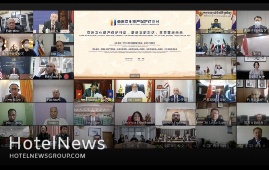
The Islamic Republic of Iran is prepared to offer expertise for the conservation of historical monuments and relics in Asia. On Thursday, Hadi Ahmadi-Roueeni, a senior official with the Ministry of Cultural Heritage, Tourism and Handicrafts announced the country’s readiness to share experience for the preservation of historical monuments with Asian countries, Iran Press reported. Establishing a fund to protect endangered cultural heritage in Asia and border-free associations of professionals in Asia as well as sharing experiences among the continental expert community would improve the conservation of the legacies, the official explained. He also called on all countries to join hands in various realms of political, academic, and professional levels to help restore the endangered historical legacies in countries suffering such problems as war, unrest, and occupation. Ahmadi-Roueeni made the remarks on Thursday on the second day of the first forum of “Asian Dialogue for Cultural Heritage Conservation” which was virtually held in China. The biggest Asian cultural heritage event is hosted by China on October 27 and 28 with the slogan of “Promoting Dialogue among Civilizations and Shaping the Future of the Asian”. According to organizers, the dialogue aims to move forward with the Asian Initiative for Cultural Heritage Conservation and open a new chapter for exchanges and mutual learning among Asian civilizations. Senior officials from 36 Asian countries and five international organizations including UNESCO, the International Council of Museums, and the International Council on Monuments and Sites participated in the conference in the form of an online meeting, Global Times reported. At the conference, the Asian Alliance for Cultural Heritage Conservation was jointly initiated by 10 Asian countries – China, Iran, Armenia, Cambodia, the Democratic People's Republic of Korea, Kyrgyzstan, Pakistan, Syria, the United Arab Emirates, and Yemen – was officially established. According to data from the UNESCO World Heritage Center, about 50 percent of the world’s endangered world cultural heritage sites are located in Asia. “Preserving our heritage is not a luxury – it is a prerequisite for ensuring that future generations can inherit an identity, a history, a voice, and a sense of ownership of their past and future,” said Xing Qu, deputy director-general of UNESCO. Xing expressed thanks to China for organizing the event and for helping to address the challenges facing cultural heritage. The ceremony also set up the Asian Fund for Cultural Heritage Conservation as a special fund to support programs and projects in conservation, research, and joint archaeology concerning cultural heritage conservation in Asia.
Create: Oct 31, 2021 Edit: Oct 31, 2021 Regional News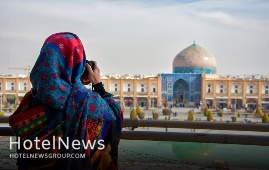
The Islamic Republic of Iran should benefit from World Cup as a considerable opportunity to promote its distinctive travel attractions, the deputy tourism minister has said. "With the World Cup being held in a neighboring country, Iran can benefit from this important event, which if carefully planned, can bring significant wins for various sectors, especially the tourism industry in the country," CHTN quoted Ali-Asghar Shalbafian as saying on Wednesday. The geographical position of Iran and its unique tourist attractions make it a potential destination for the World Cup spectators, the official added. Therefore, proper policy-making and management in collaboration with the private sector can pave the way for the widespread use of this event, he noted. Increasing the number of flights between Iran and Qatar during the event, which will be held from November 21 to December 18, 2022, as well as showcasing and introducing distinctive tourist attractions of the country to the spectators at this event are on the agenda of the tourism ministry, he explained. Back in September, Cultural Heritage, Tourism, and Handicrafts Minister Ezzatollah Zarghami announced the issuance of tourist visas and the flow of foreign tourists to Iran would resume as per President Ebrahim Raisi’s order following 19 months of suspension. However, now that the tourist visas are once again being issued to cultivate good grounds of hope for travel insiders. Months of steep recession has taken its toll. Many travel insiders, hoteliers, and tour operators have faced big dilemmas such as bankruptcy, unemployment, debts, and the prospects of not being competitive on the international level. Meanwhile, the number of people testing positive for COVID-19 has continued to fall in the Islamic Republic, curbing a stubborn fifth wave of the pandemic, which has seen daily mortalities of up to 700 in recent weeks. As of September 22, the figure dropped to below 300 as the government has devoted a great deal of effort to vaccinate citizens against the nasty virus. Some experts believe Iran is still somehow “unknown” for many potential travelers due to Western “media war”. Several estimates have been released so far on the extent of the tourism-related losses incurred by the pandemic. Only months into the outbreak, Zarghami’s predecessor, Ali-Asghar Mounesan, lamented that the number of foreign travelers to Iran was drastically plunged due to the pandemic. Tourism of the country was growing before the corona [outbreak], its revenues reached $11.7 billion in 2019, which accounted for 2.8% of GDP, nearing the average share of tourism in the world GDP, which was 3.2 percent,” Mounesan said. He added 8.7 million foreign nationals visited Iran during the [Iranian] year (1398), adding that Iran was ranked as the second fastest-growing country in tourism based on data compiled by the World Tourism Organization. Experts expect Iran to achieve a tourism boom after coronavirus contained, believing its impact would be temporary and short-lived for a country that ranked the third fastest-growing tourism destination in 2019. The Islamic Republic expects to reap a bonanza from its numerous tourist spots such as bazaars, museums, mosques, bridges, bathhouses, madrasas, mausoleums, churches, towers, and mansions, of which 26 are inscribed on the UNESCO World Heritage list. Under the 2025 Tourism Vision Plan, Iran aims to increase the number of tourist arrivals from 4.8 million in 2014 to 20 million in 2025.
Create: Oct 31, 2021 Edit: Oct 31, 2021 Regional News
A selection of craftspeople, travel insiders, and exhibitors from Sistan-Baluchestan are getting prepared to promote the southeastern Iranian province at the Expo 2020 Dubai, which is currently underway in the UAE. "[A selection of exhibitors from] Sistan-Baluchestan province will be attending the expo in Dubai, in [the month of] Bahman to present a variety of programs," the provincial tourism chief Alireza Jalalzaei said on Tuesday. A wide range of Sistan-Baluchestan's ancient handicrafts, live performances, and workshops, and introductions to cultural and natural destinations, and the archaeological sites is expected to take the center stage at the Iran pavilion during the event, the official explained. Visitors to the pavilion are offered to discover epitomes of the ancient land in terms of rituals, handicrafts, cultural heritage, and travel destinations. It also reveals more about medical tourism, novel startups, and off-the-beaten tracks. Many countries and companies are also looking to the expo - the first major global event open to visitors since the coronavirus pandemic - to boost trade and investment. According to organizers, the Expo, an exhibition of culture, technology, and architecture under the banner “Connecting Minds and Creating the Future”, is expected to be a demonstration of ingenuity, and a place where global challenges such as climate change, conflict, and economic growth can be addressed together. Iran expects to reap a bonanza from its numerous tourist spots such as bazaars, museums, mosques, bridges, bathhouses, madrasas, mausoleums, churches, towers, and mansions, of which 26 are inscribed on the UNESCO World Heritage list. The collective province -- Sistan in the north and Baluchestan in the south -- accounts for one of the driest regions of Iran with a slight increase in rainfall from east to west, and an obvious rise in humidity in the coastal regions. In ancient times, the region was a crossword of the Indus Valley and the Babylonian civilizations. The province possesses special significance because of being located in a strategic and transit location, especially Chabahar which is the only ocean port in Iran and the best and easiest access route of the middle Asian countries to free waters. The vast province is home to several distinctive archaeological sites and natural attractions, including two UNESCO World Heritage sites, namely Shahr-e-Soukhteh (Burnt City) and Lut desert.
Create: Oct 31, 2021 Edit: Oct 31, 2021 Regional News
